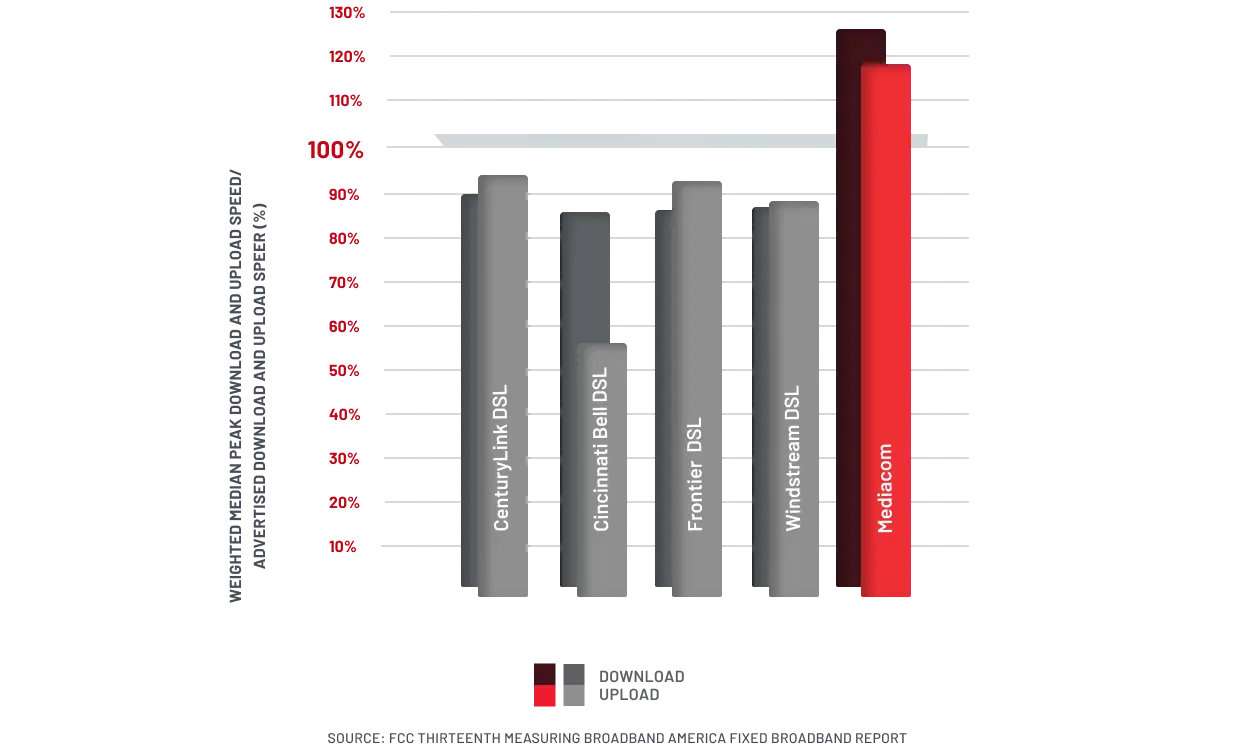All Business Internet speeds include Advanced Wi-Fi + Data Security.
Business Internet 300
$99.99
Per Month for 1 Year
Max Download Speed
300 Mbps
Max Upload Speed
30 Mbps

Business Internet 500
$119.99
Per Month for 2 Years
Max Download Speed
500 Mbps
Max Upload Speed
50 Mbps

Business Internet 1 Gig
$149.99
Per Month for 2 Years
Max Download Speed
1 Gig
Max Upload Speed
50 Mbps
Manage your business better with the efficiency that only broadband can provide. Productivity depends on a reliable internet connection.
Advanced Data Security
Unlimited Usage
Business Wi-Fi
Business-Grade Speeds
99.99% Network Reliability*
Secondary DNS
Business Modem Included
Dynamic IP Included
Dedicated Business Support
Priority Status Service Calls
*2024 Mediacom Executive Summary Reliability Report.
Powered by eero
The Next Generation of Connectivity

Network Intelligence dynamically finds the optimal path for the best coverage and power to devices.

Move the connection to a nearby Wi-Fi network or a mobile hotspot, even when the wired connection goes down.

Each device covers up to 1,500 square feet and 75+ connected devices simultaneously.

Device sets up in minutes and is easy to control with an intuitive app. Manage your network from anywhere.

Get data on network health and visitor profile usage to better manage your business.

Keep traffic paths separate for employees, customers, point-of-sale or iOT devices like security cameras.

When customers log on, use this opportunity to market your business or announce promotions and special offers.

No need to worry, it all happens behind the scenes as Mediacom Business manages and monitors the service.
Helps prevent accidental visits to malicious sites by employees and guests and works to protect connected devices.
Block Ads
Get rid of annoying ads and pop-ups, all while improving load times for ad-heavy sites.
SafeSearch
Feel rest assured that Google search results are appropriate.
Network Insights
Ability to see historical network usage and performance data over time.
Block/Allow Websites
To block or allow specific websites on network or devices.
Internet Backup
Connect network to an alternate internet data hotspot to keep the network up and running during an outage.
Content Filtering
Easily set profile-specific time limits and block websites
for workplace-safe browsing.
Block Apps
Ability to block popular apps per profile.
Mediacom once again stood out, delivering far beyond our promised upload and download speeds. We continue our high-performance trend, providing faster speeds and investing in our network to bring our businesses the latest broadband technology.
MEDIAN SPEED (DOWNLOAD AND UPLOAD TO ADVERTISED SPEED

